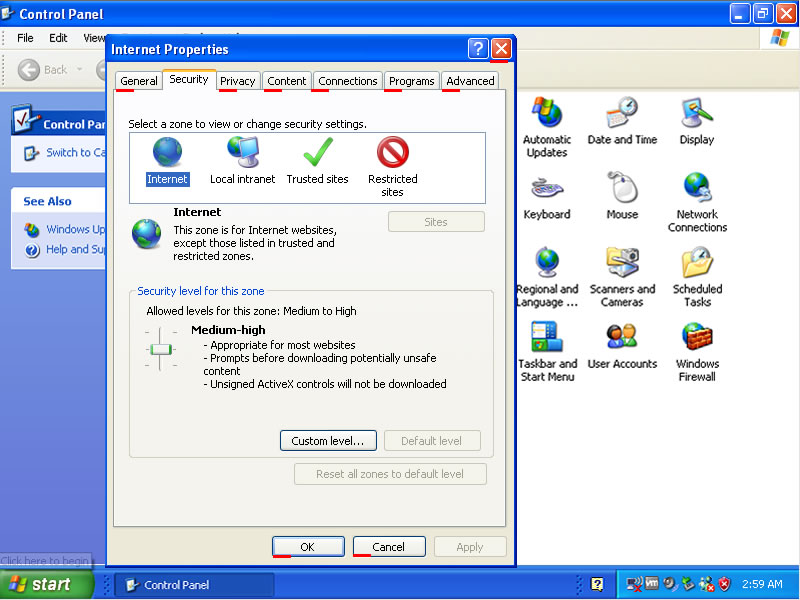
- #Unable to access control panel xp how to#
- #Unable to access control panel xp windows 10#
- #Unable to access control panel xp iso#
- #Unable to access control panel xp windows 7#
If you don’t have any restore points listed, your System Restore may have not created any restore points of your system. Follow System Restore instructions to restore your computer by choosing an available restore point from the list.The Advanced Boot Options screen in Windows Vista You can try to create a manually restore point. Check if System Restore or Volume Shadow Copy is running correctly.Click OK (three times) to exit the menu.Follow the first steps and deselect the No paging file option. Replace c: with the letter of the drive where Windows is installed. In this example, pagefile.sys path is: C:\pagefile.sysNote that pagefile.sys is a hidden file and you need to show hidden files and folders (go to Folder Options to enable this option) to view the file. Delete pagefile.sys from your main drive, e.g.Boot again and go to Computer (or My Computer).Click OK (three times) to exit the current menu.Type advanced system settings in the search bar.In order to fix this, you can do the following: disable, delete or recreate the page file.
#Unable to access control panel xp windows 7#
This is very common behavior for Windows 7 systems.

If your system’s page file is fragmented, your System Restore points might get deleted at each restart.
#Unable to access control panel xp windows 10#
Windows 10 Volume Shadow Copy screen Fix #5: Check page file for fragmentation
#Unable to access control panel xp how to#
If you’d like to have a recovery USB instead, follow our instructions on how to make a recovery USB.
#Unable to access control panel xp iso#
Follow our instructions on how to burn a bootable ISO image. You can also check if the hard drive is healthy with Easy Recovery Essentials: This could be the cause for the missing System Restore points. If chkdsk or sfc (or both) output shows error in System Restore, your computer’s hard drive might be failing or it’s corrupted. Windows 10 System Restore screen Fix #3: Run chkdsk, sfcīy running the chkdsk and sfc commands you can check if there are any issues with your computer’s hard drive. Use the Max Usage slide to increase the space for System Restore. To do so, follow the steps from until you reach the Max Usage option of System Restore. You can also configure System Restore to use more space to save the restore points. If your computer no longer has the free space, System Restore – even if it’s turned on – will stop creating restore points. Make sure the Turn on system protection option is checked in order for System Restore to be turned on.Select which drive you want to check and click Configure.Search for system restore in the search bar.Make sure the Restore system settings and previous versions of files option is checked.Select which drive you want to check if System Restore is enabled (turned on or off) and click Configure.Choose System Protection and then go to the System Protection tab.Whenever you check a drive checkbox, System Restore will be enabled for that disk.

From Available Disks, make sure all disks are checked.Click Start > Programs > Accessories > System Tools.



 0 kommentar(er)
0 kommentar(er)
